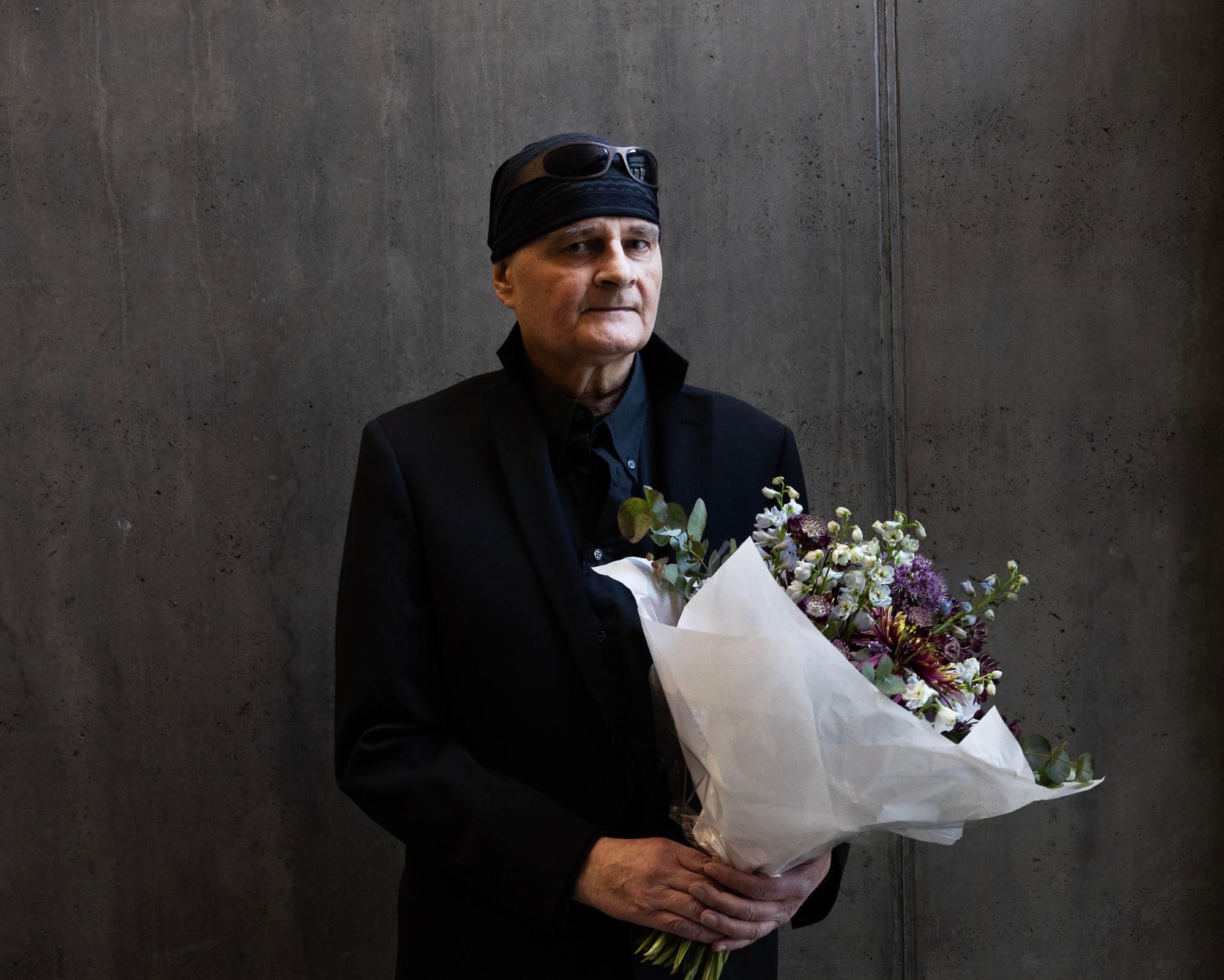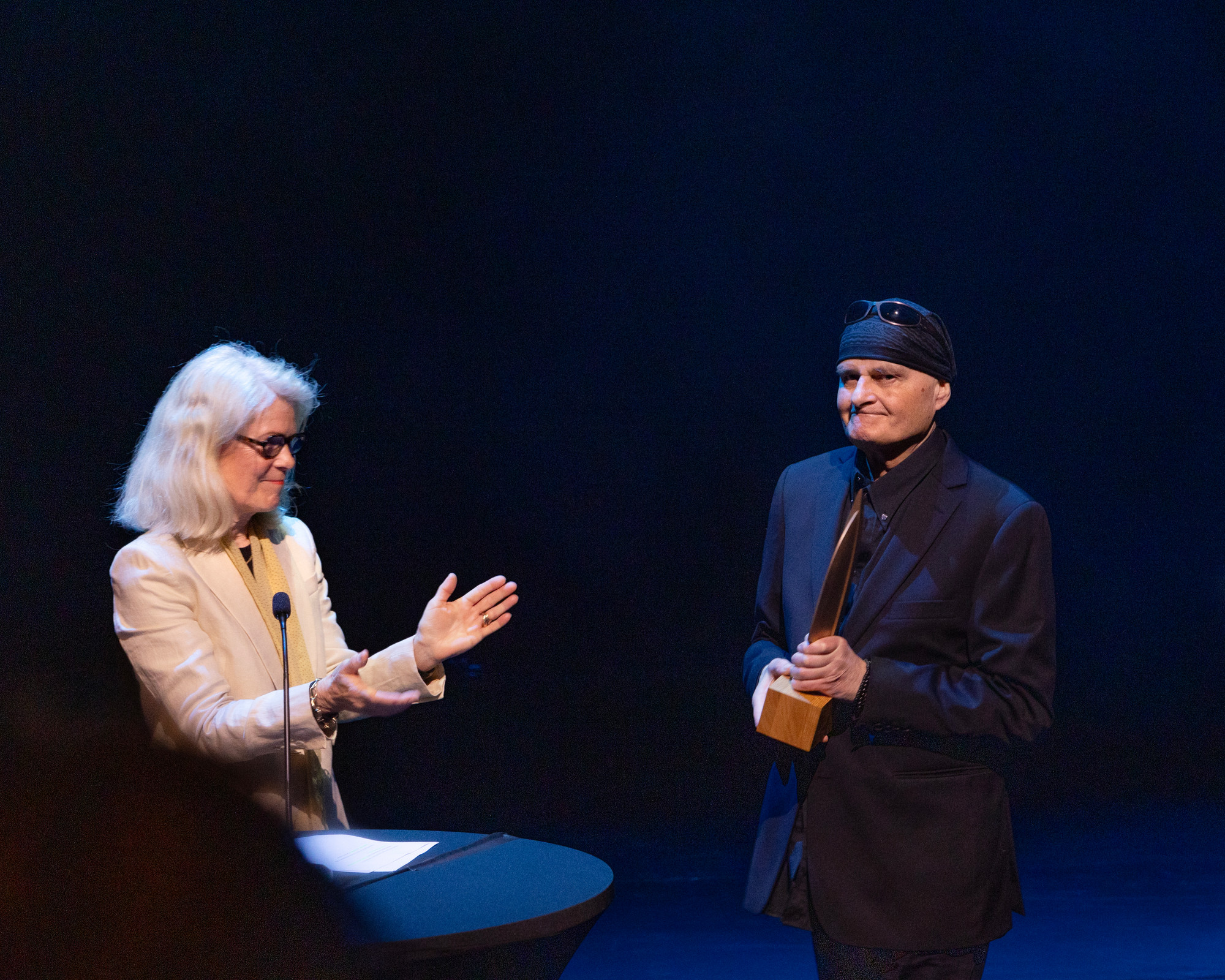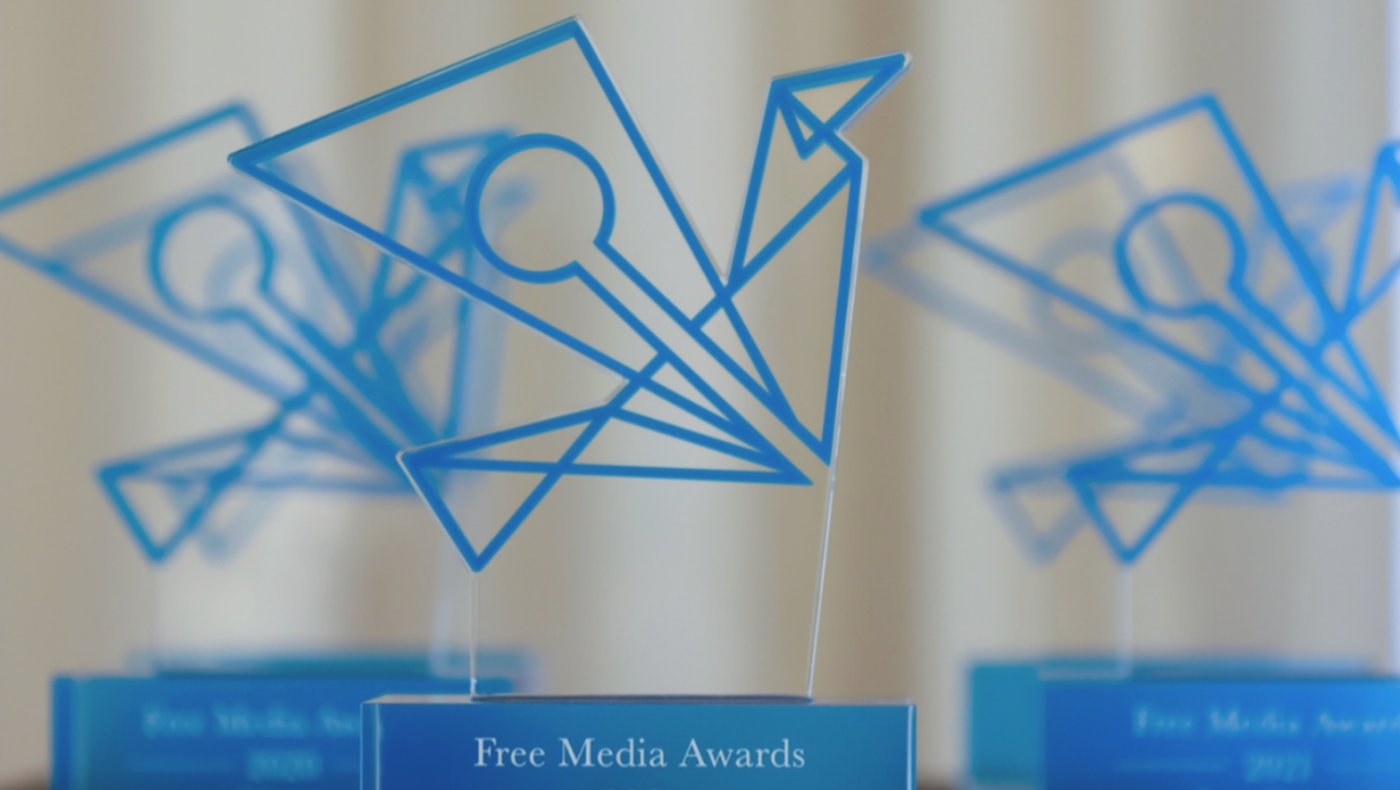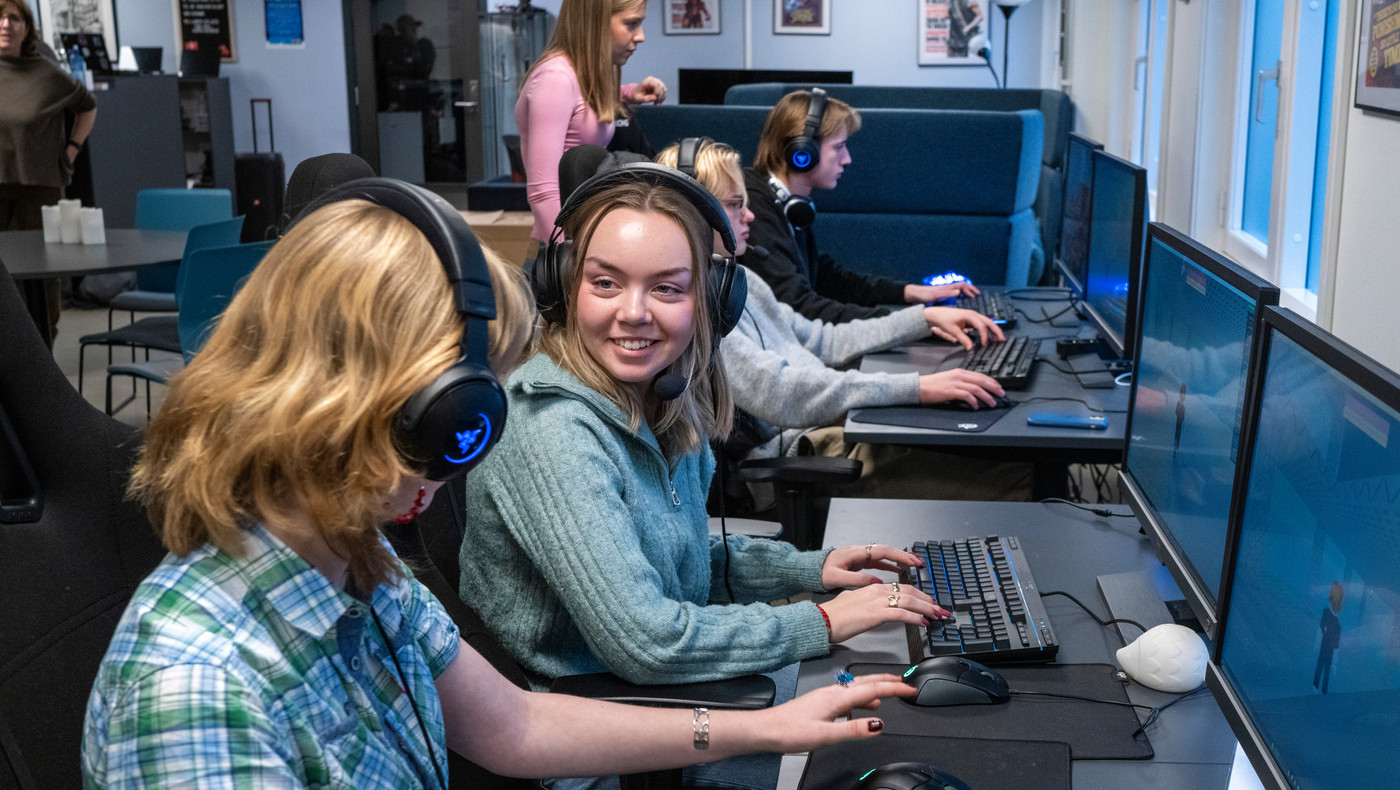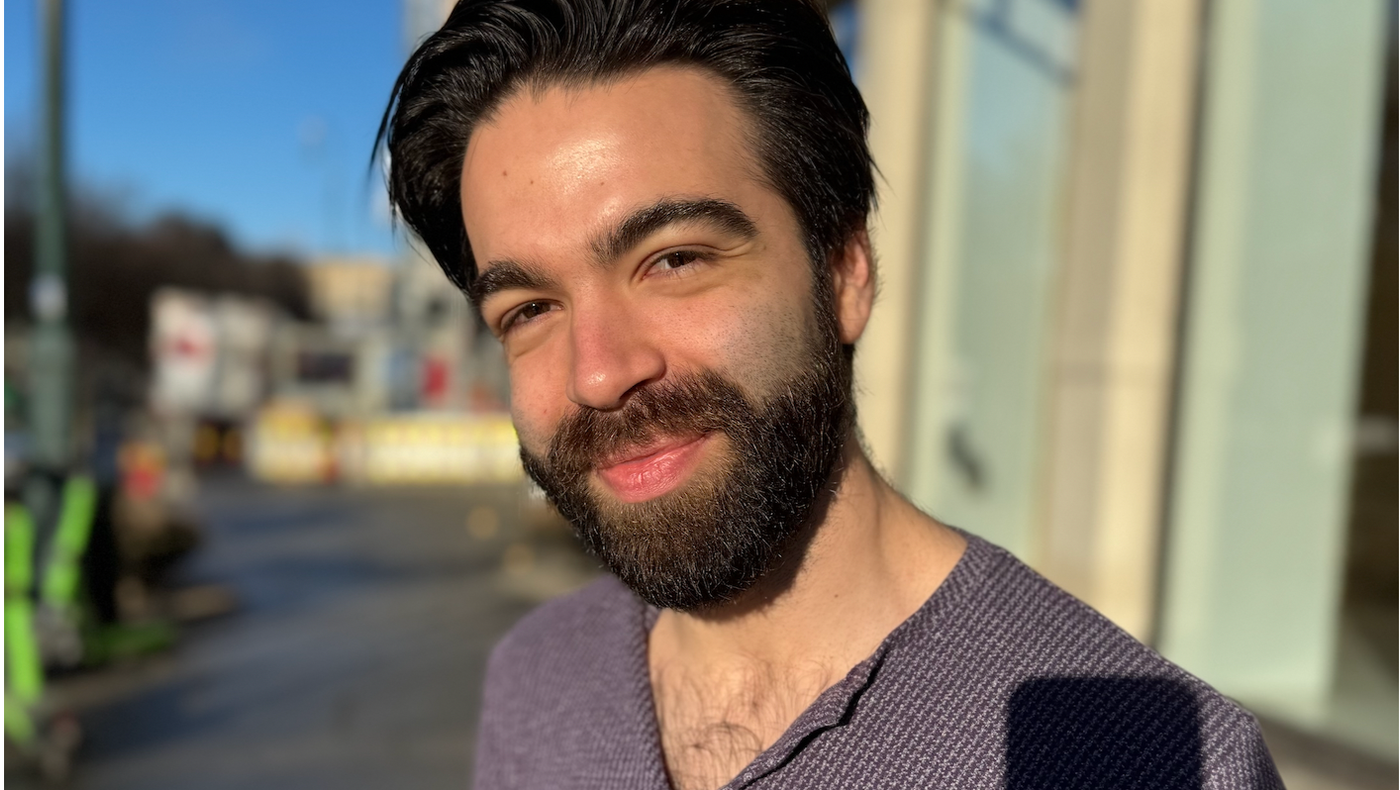“In an age of fake news, AI, propaganda and manipulation, we must place trust in the photographer himself.” Speeches on the occasion of the awarding of the 2024 Fritt Ord Prize to Harald Henden
“Each day, more than 3 billion images are uploaded to social media, including photos from conflicts and disasters. However, in an age of fake news, propaganda, manipulation and artificial intelligence, the question is often ‘what can we trust?’" observed Harald Henden upon being awarded the Fritt Ord Prize.
His response is that we must trust the individual photographer. Grete Brochmann, chair of the Fritt Ord Foundation Board, drove home the same point, calling war and documentary photography an integral part of the infrastructure of freedom of expression.
Acceptance speech at the award ceremony for the Fritt Ord Prize on 7 May 2024
See and hear the speech here (in Norwegian)
Speech delivered at the 2024 Fritt Ord Prize award ceremony by prize laureate Harald Henden on 7 May 2024
“My sincere thanks to Fritt Ord for this honour and for this recognition of my work. While I am extremely proud, I am also humbled. This is invaluable affirmation of the documentary power of photography, and a tribute not only to me, but to all photographers working in the world’s most troubled areas.
“It never occurred to me that I would end up spending so much time in conflict zones and disaster areas. Quite the opposite, in fact. I remember from my childhood how afraid I was that there would be a war in my own country. I even included a sentence in my regular evening prayer, asking that there never be war in Norway. Those were dangerous times, with the Cold War raging and, not least, the Vietnam War.
“The Vietnam War was special. It marked the first time photographers were given virtually free access to the battlefield. This meant that the horrors of war could be documented in a different, more truthful way than before. It brought the senseless brutality of war into the homes of people all over the world.
“Those of us of a certain age will still remember the photo taken by AP photographer Nick Ut, of Kim Phuc, the nine-year-old girl fleeing Napalm hell, naked and badly burned. Or Eddie Adams’ photo of Vietnamese police general Nguyen Loan executing a suspected Viet Cong soldier in downtown Saigon. These images helped turn US public opinion against the war, thereby shortening it and the suffering it caused.
“American generals later blamed the press for the US losing the war. This demonstrates the tremendous power of a still image. We should never take such images lightly, and we must remain constantly aware of how we use photography, in the light of the reality of a particular time.
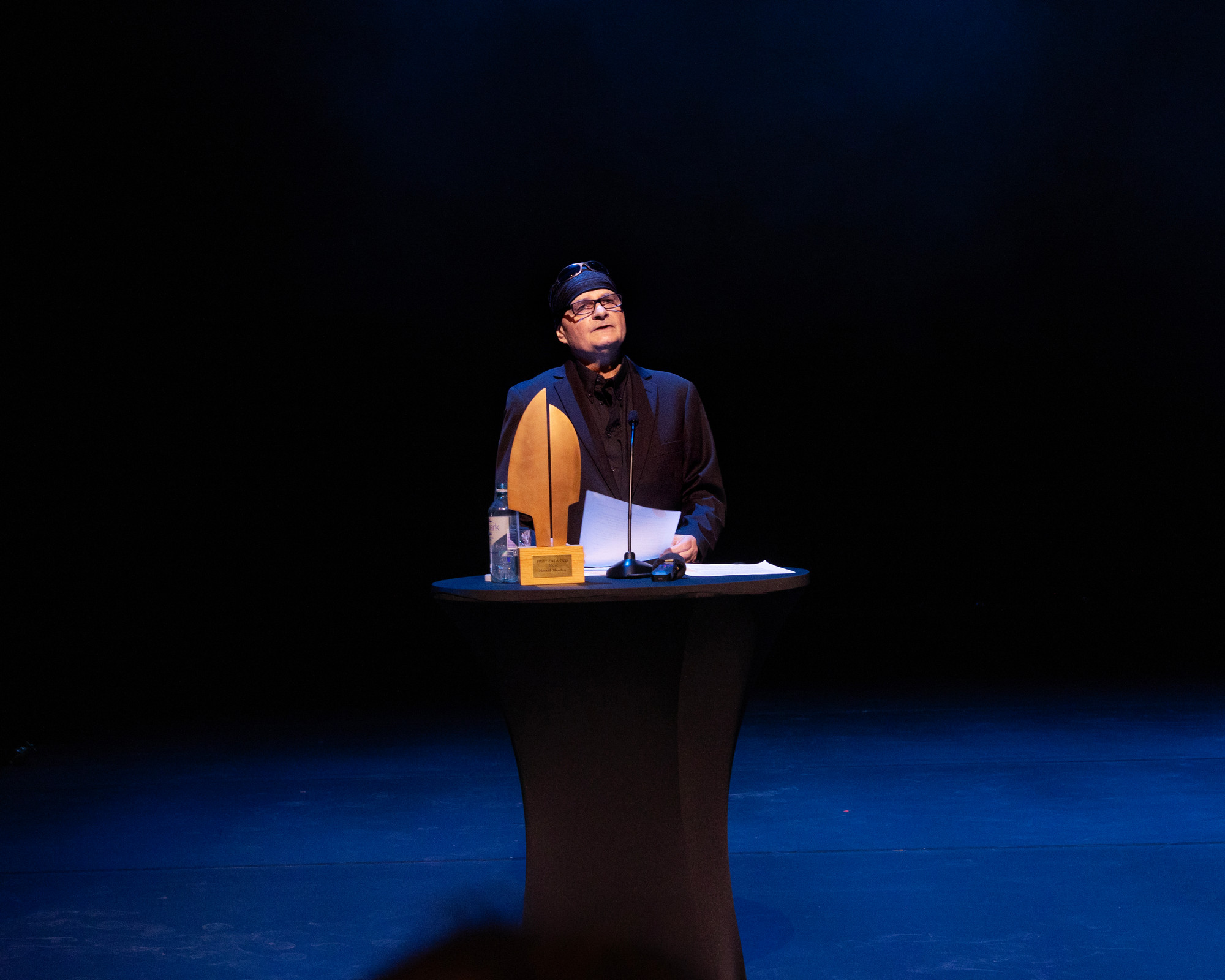
“In order to document the conflicts up until the end of the last millennium at all, it was absolutely necessary for the media to have their own photographers on site. Back then, we possessed special expertise: We were the only ones who could take a picture, develop the film and send the result home over an analogue phone line so that it could be printed the following day. That is no longer the case.
“Every day, more than 3 billion images are uploaded to social media. The sheer volume of images from conflicts and disasters is also huge. But in an age of fake news, propaganda, manipulation and artificial intelligence, what can we trust? The media’s most important asset is credibility. During the war in Ukraine, several major media houses were forced to form their own verification groups to ensure that images and videos actually showed what they claimed to show.
“Without this work, things could have gone terribly wrong.
“This is precisely why it is no less important to have your own photographers present today. In fact, it is more important now than ever before. This is because credibility is also the individual photographer’s most important asset. When I put my name under a photograph, readers should be able to trust that the content is genuine, so that no further verification is needed. My name should stand for truth. Such credibility takes many years to build up, but it can be destroyed by a single mistake.
“For this reason, among others, photographers should adhere to a very high ethical standard, not least because there are so many difficult decisions to be made when working in conflicts and disasters.
“During the war in Gaza in 2014, several hundred people were gathered in a schoolyard in Beith Hanoun in the northern part of the Gaza Strip. They were waiting for a lull in the fighting so they could be evacuated. Then it happened: An Israeli tank fires four shells that hit the schoolyard. Thirteen people were killed, including six children. Dozens more were wounded.
“The dead were brought to the morgue at the Kamal Edwan Hospital in Beit Lahiya. Outside the morgue, hundreds of relatives waited. Inside the morgue itself, 76-year-old Ahmed Taroush was working hard. His job was to prepare the dead, to make everything look as dignified as possible before the relatives got to see their loved ones.
“However, when he had finished his gruelling work and the doors opened, it was not the relatives who entered first. It was the photographers. As I entered, I saw him gently laying the youngest victim down on the cold metal slab. It was eight-month-old Suha Mosle. She and her mother were both killed as Suha was nestled in her mother’s arms.
“The photographers fought for space in the crowded room; it all felt so undignified. Why was it like this? We are well aware of the danger of being used for propaganda purposes in all armed conflicts, in this case by Hamas.
bq. “Sometimes it feels like the right thing to do would be to put the camera down in silent protest.
“The first victim I photographed in this war in 2014 was a four-year-old girl named Sarah. She was killed by a grenade, along with her father and uncle, on a playground outside Rafah, the city that is currently expecting to be attacked by the Israeli army.
“After the bodies were collected from the morgue by male relatives, they were taken to the family’s modest home so that the women could also say goodbye. The problem was that there were so many photographers present that it was difficult for the women to get close to the dead. In the end, little Sarah’s mother did not get to say a final goodbye to her dead daughter.
“It was with a bad feeling that I travelled back to Gaza City that afternoon. What right do we have to intervene in people’s lives at a time when they are most vulnerable?
“Are we adding to the strain, a strain that may already be at the limit of what a human being is able to withstand?
“These are thoughts that have always accompanied me into the field. Ethically speaking, one is often balancing on the edge of a knife. I sincerely hope that I have always fallen on the right side. I would prefer to be able to live with what I see in the mirror every morning.
“It has always been important for me to do my best to ensure that the people I meet retain their dignity when I am allowed to photograph them in what may possibly be life’s most difficult situations. That is why the names of the victims have been very important to me. In a world where conflicts tend to pile up, it is far too easy to reduce people to statistics, to yet another nameless victim that few care about. The most important identifier we have is our name. We are all unique human beings, we are a mother’s son, a child’s father, a brother’s sister. Few of us are completely alone in the world, some may be left behind in deep sorrow, the violence affects so many.
“The least I can do is to let the victims retain their humanity, dignity and identity, even in death.
“Taking an effective photo in conflicts and disasters is not necessarily all that difficult. The drama is often unfolding right in front of you. The hard part is being able to deal with your own emotions and sensory impressions.
“The question is not whether you feel fear, because that is a given in some situations. The question is how you deal with it. You cannot let it paralyze you or cause you to act irrationally. It has to be used for something positive, perhaps by making you even more careful.
“There is quite a lot you can do to reduce the risk. The most famous war photographer of all, Robert Capa, once said: ‘Too far away and you will not get a picture. Too close and you are not alive to take it.’ That means there is a delicate balancing act.
“I have always been keen to reduce risk as much as possible, both for myself and for my colleagues. No photograph is worth an injury or death. When my superiors at VG have trusted me enough to send me into the field, coming back alive is the least I can do!
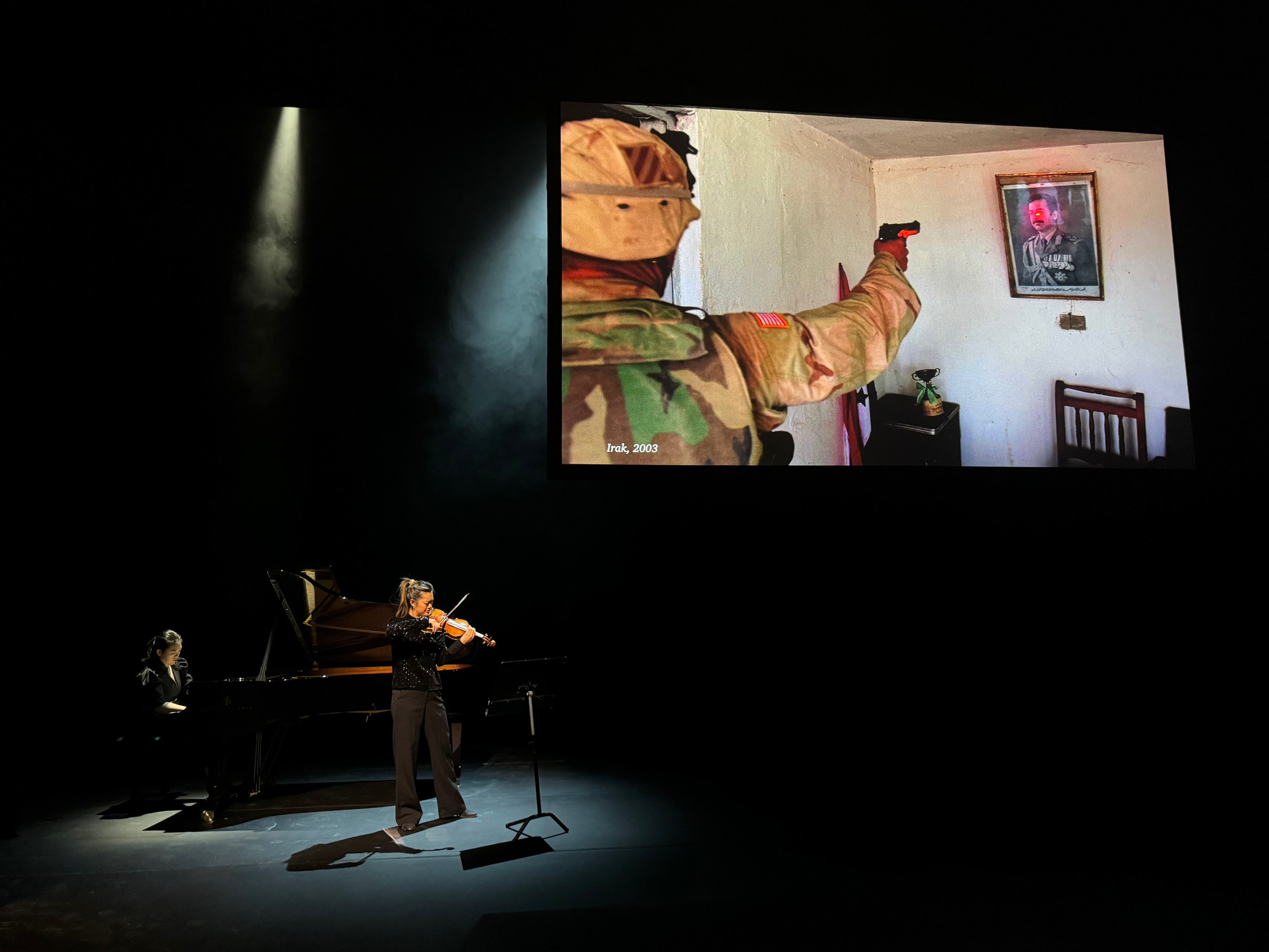
“However, on one occasion I thought I had made the wrong choice.
“Early in the morning one day in April 2003, I was sitting with my colleague Kim Riseth in an armoured American personnel carrier on the outskirts of Baghdad. I was so scared that I was nauseous.
“The day before, the Americans had conducted a so-called ‘thunder run’ towards the Iraqi capital. This means that a group of tanks, armoured combat vehicles and other vehicles drove towards enemy lines to attract fire. The soldiers were trying to gain an understanding of what to expect in the event of a major offensive. This ‘thunder run’ met greater resistance than expected. That afternoon I photographed wounded American soldiers being flown out to a field hospital that was set up where we were staying.
“Later that same afternoon, Colonel Perkins held a briefing at which he told us that he would attack Baghdad early the next morning. Kim and I were offered the chance to join them.
That night, I spent several hours considering safety. We were not able to call home to consult with our superiors. Such calls could be intercepted by the Iraqis. What we had agreed before we left home was that we would not necessarily be among the first to enter Baghdad. Two other journalists, Julio Parrado from Spain’s El Mundo and Christian Liebig from Germany’s Focus Magazine, decided it was too dangerous to enter Baghdad, so they stayed behind in camp.
“But, ultimately, I said ‘yes, let’s do it’.
“As we sat in the armoured vehicle at daybreak with the sunroof open, I was terrified that I had made the wrong decision. If I could have changed my mind at that point, I would have.
“I do not have many pictures from the trip to Saddam’s palace. I was terrified that something would go wrong, afraid that something would happen to Kim. So, I mostly stayed hidden deep inside the vehicle.
“A huge equestrian statue of Saddam on the parade ground was to be shot to pieces. Fox News rigged up a camera.
“The images were broadcast live, also to Norway. It is said that my editor-in-chief at the time, Bernt Olufsen, choked on his coffee when he caught a glimpse of Kim and me on the TV screen. After all, we had agreed on safety first; we were not going to be the first to enter the Iraqi capital.
“Shortly afterwards, Colonel Perkins received a briefing over the radio from the site we had left at dawn. An Iraqi rocket had hit the headquarters. Two American soldiers were killed. For me, all human lives have the same value. However, I cannot deny that the worst thing for me at that moment was that the two journalists who had considered it too dangerous to go into Baghdad, Julio and Christian, were also killed instantly. If Kim and I had made the same decision, the same fate would have befallen us.
“A quote from Michael Herr’s book from the Vietnam War, ‘Dispatches’, describes it best: ‘Never mind the bullet with your name on it. Beware of the bullet that says ‘To Whom it May Concern’.”
“At the end of the day, it is fate and coincidence that decide.
“Again, my sincere thanks to Fritt Ord for making this one of the best days of my life.”
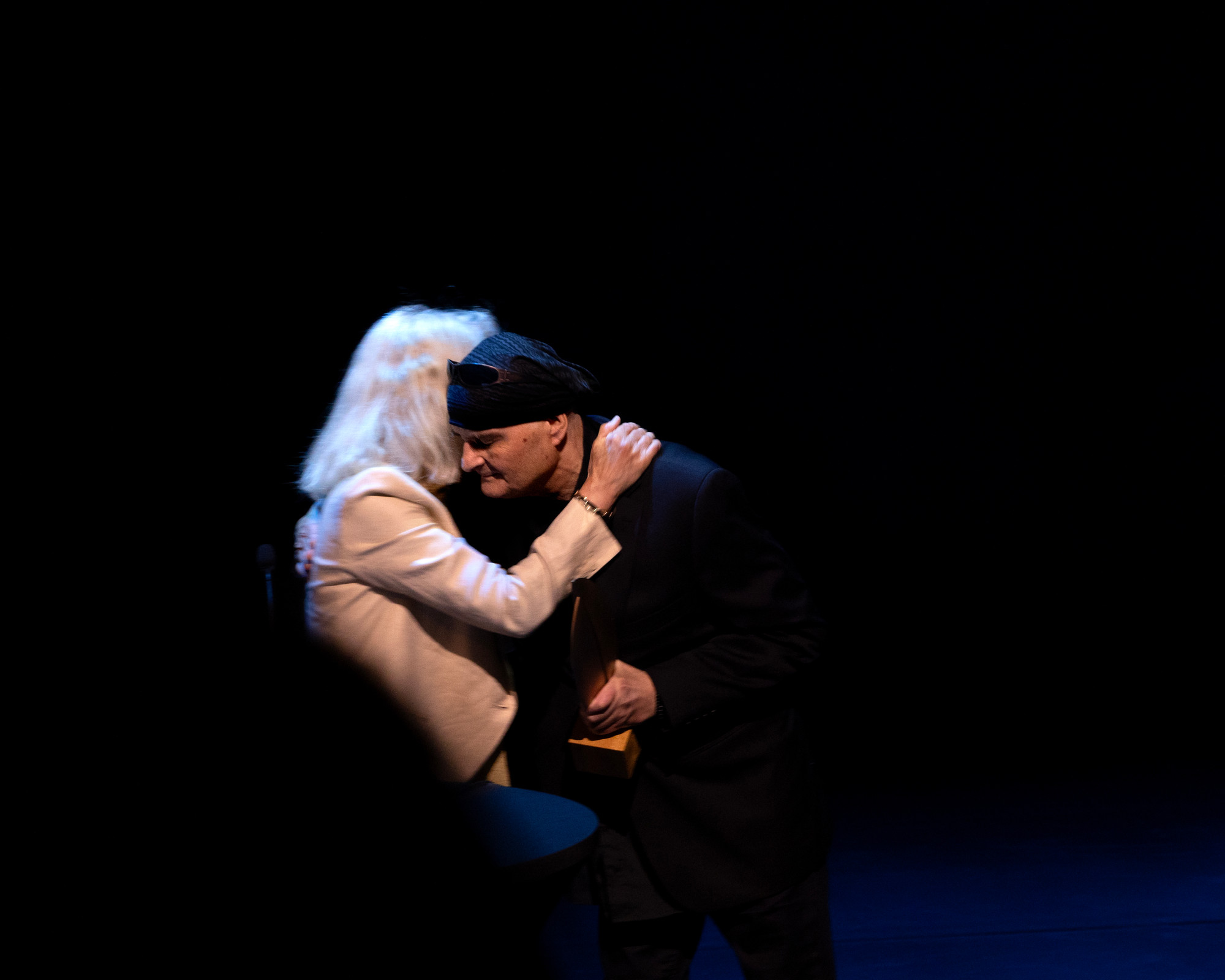
Speech at the award ceremony for the 2024 Fritt Ord Prize on 7 May 2024 by Grete Brochmann, chair of the Board
You can see and hear the speech here
Dear prize laureate, dear guests.
Welcome to the presentation of the Fritt Ord Prize for 2024, where Harald Henden is being awarded the Foundation’s highest honour for his work as a war and press photographer for more than three decades.
“First and foremost, Harald Henden is receiving this award because he is an outstanding war and disaster photographer: With perseverance and at the risk of his own life, he has travelled to front lines and conflict areas the world over to photograph important news events, while always keeping the civilian population in mind, according to the grounds for this prize.
“Henden is probably best known as a war photographer, but he is undoubtedly also a great documentarian and photojournalist. With rare dedication, he has documented global events for the newspaper Verdens Gang from 1989 to the present day. The first war he covered was the Gulf War in 1991.
“Then came the Balkan wars, Kosovo, Iraq, Sudan, Somalia and Afghanistan, to name but a few. Add to that violent natural disasters such as the tsunami in 2004 and the earthquake in Haiti in 2010. He has covered a series of wars, conflicts and devastation that have burned themselves into our memories, not least because of the unforgettable images they have produced.
“The ongoing wars in Ukraine and Gaza highlight the importance of photo documentation, not least to reveal the effects of war on the ground and violations of international law.
“Harald Henden travelled to Kyiv in Ukraine even before Russia’s full-scale invasion on 24 February 2022 to document the run-up to the war and the attacks in the days that followed. Since the start of this war of aggression, he has made six more reporting trips to Ukraine, documenting the suffering and fate of soldiers and civilians in places such as Dnipro, Izium, Bakhmut, Donbass and Kharkiv. Through repeated trips to the same areas, Henden has gained insight into the conflict itself, but also into ordinary people’s survival strategies and everyday life under extreme conditions.
“Harald Henden has also been closely involved in the long-running conflict between Israel and Palestine for decades. The Israel-Palestine conflict has been his most frequent destination since the 1990s. He made several trips to Gaza and the West Bank before documenting the wars in 2008-2009, 2012 and 2014 – the last two times from inside Gaza. Henden also returned to the Middle East to cover the war between Hamas and Israel in 2023, but this time without being allowed to enter Gaza, as Israel has refused access to the international press during the ongoing war.
“The importance of credible documentation through images has become even more evident in the two wars that are raging today, and they will probably also have an impact on the aftermath: Images of war material, information about the horrors, and violence against the civilian population will matter greatly when the perpetrators of violence are to be held accountable. Your very presence as a photographer is important: Harald Henden himself says that without independent witnesses in a conflict, it is easier for soldiers and civilians to commit abuses. He has taken great responsibility by showing us things that should be seen.
“For those of us at Fritt Ord, this year’s award is also recognition of the importance of photography for ensuring access to information and freedom of expression, and hence for the rule of law and democracy. Photojournalism and documentary photography are part of the infrastructure of freedom of expression, which Fritt Ord has supported for many years.
“A reliable photograph, produced close to the events, is an extremely important medium for freedom of expression and human rights. The image is an independent journalistic expression, and we see it as particularly important to pay attention to this expression in troubled times when governments and other actors use disinformation, fabrication and propaganda.
“Documentary photography and photojournalism are forms of expression with great impact in our time.
“They help to shape our perceptions of the world and our ways of looking at events and situations. The saying ‘I won’t believe it until I see it’ expresses the idea that the image is truer than the word, i.e. that it is an expression of reality.
“However, we live in an age where we are hyper-stimulated visually constantly, and where photography is commonplace in every context. Computerised image technology offers great opportunities for manipulation.
“This makes the quality of the work performed all the more important – its reliability – the trustworthiness of the person submitting images for publication. The photographer behind the image is no less important for the content and credibility of the expression than the author behind the text.
“’The easier it is to manipulate and lie, the more important the work of real-life documentarians,’ maintains Norwegian photographer Jonas Bendiksen. ‘Who is the sender, from where and with what credibility? In these situations, high standards must apply to professionalism in order to restore confidence in the truth when it exists.’
“The properties of photography are unique: a strong image can often convey a message more effectively than multiple texts. An image can supplement text, but also provide meaning beyond text. In a short space of time, an image can tell a comprehensive, complex story that sticks in the mind and is remembered. It represents immediacy and opportunities for rapid dissemination. An image freezes a moment in time – capturing a telling facial expression or body language, joy, sorrow, disaster. It bears witness to lives at risk. This helps to make photography one of our most important tools in communication work.
“Visual communication can expand human understanding and create reflection. ‘Photographs have a tendency to transform,’ writes Susan Sontag in one of her books. ‘To remember is less and less to recall a story, but rather to be able to conjure up an image.’
“She talks about ‘authoritative communication’:
bq. “The power of photography to define, not simply document. ‘A picture is always taken from a point of view’. It is ‘a slice of reality’.
“Anyone who has seen Harald Henden’s images will know what Susan Sontag is referring to in this context. It is this defining ‘beyond the purely descriptive’ that makes images attract attention, making them stick in our minds and live on. This is how they say more than what the object pretends to convey: Small details can suddenly trigger emotions due to the way they are depicted. The photographer’s ability to interpret the reality depicted. These are powerful images conveyed with dignity by those depicted.
“’Risk’ is a key word applicable to most of the work Harald Henden has done.
“In Svein Tore Bergestuen’s biography of Henden, we get an impression of how much meticulous planning and logistics go into capturing an accurate image, and how much time must be invested in ensuring safety and access to what happens when it happens. Facilitating spontaneity. Not least, the job requires an impressive amount of physical and mental courage.
“Henden himself sums up what is required: timing, ‘getting to where it is happening’, controlling fear and emotions. Keeping a cool head in extreme situations. Not becoming paralyzed. Show caution and common courtesy. Get the photos sent home.
“We can also talk about professional risk. Being a war photographer requires keen powers of observation and judgment. One can make ethical and political mistakes. Images can give rise to conflicting reactions.
“Painful, shocking images can encourage reflection and incite people into action, but over time they can also result in withdrawal and indifference. They can create a sense that the horrors are endless and impossible to relate to. One’s capacity for compassion is undermined. Great demands are placed on understanding people’s roles: Photography is about condensed emotions, which must be conveyed with ethical accountability. One has to have feelings to do a good job, but it is risky to become overly compassionate.
“How to keep from becoming jaded?
“As in so many other contexts, images can be misused politically, that is, taken out of context or taken as support for points of view other than those that were intended.
“Hardly anyone emerges from a long life in war journalism ‘without getting his feathers ruffled’. Harald Henden has received his share of criticism. VG’s coverage of the final phase of the war in Iraq in 2003 is probably etched in his memory. Photographer Henden and a colleague followed the American forces on the last leg into Baghdad, and were able to enter Saddam Hussein’s palace as the first witnesses to an event on a global scale, but they had to tolerate sharp criticism from colleagues for so-called ‘embeddedness’, that is, biased reporting.
“The personal costs of war journalism can also be significant.
“Two very tangible, immense costs are often mentioned in interviews with Harald Henden: when he lost a dear colleague (Carsten Thomassen) in Kabul in 2008, and when he himself was hit by a bullet in the head on the West Bank in 2001.
“Other costs are more insidious over time: The wear and tear of always having to be ready to travel in five minutes. A life on standby. A life of constantly being on the move.
“As Henden himself puts it: ‘Fear is a natural part of everyday life when covering wars’. And ‘it is exhausting to be afraid for long periods of time’. You end up with ‘mental baggage’.
“Being torn between different worlds can be difficult to cope with as well: Missing out on friends’ everyday lives. Missing out on important personal events can take its toll.
“I could never have been so intensely engaged in this if I had had a family and children,” says Henden in Bergestuen’s biography.
“In war and loneliness” is the title of the biography, in which the author calls Henden the man who skydives for fun.
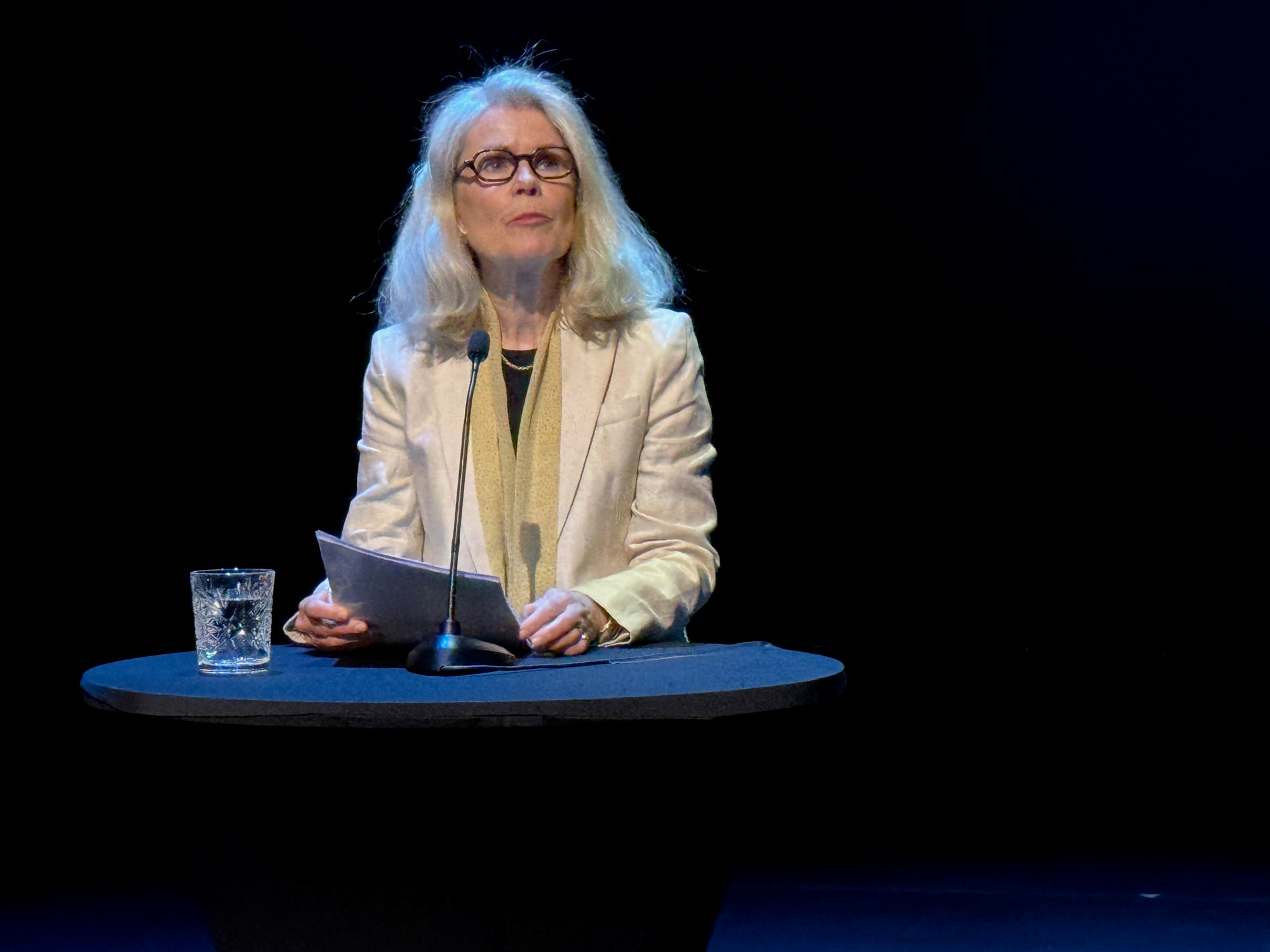
“One of the most important roles of the press in wars and disasters is to be present early on to gain the best possible access to uncensored documentation of what happens as conflicts unfold. Harald Henden has fearlessly gone into unpredictable, dangerous areas to become a first-hand witness to what is happening – a prerequisite for us to understand more.
“He has been the eyes of Norwegians in vulnerable situations, and he has built up credibility over the years, using the free image to inform those of us who are on safe ground. He has shown us the human cost of war by giving vulnerable people a voice.
“Henden himself has now been diagnosed with cancer, putting an end to his work as a war photographer.
“Dear Harald Henden, your openness about your health seems like an extension of your life in the press. You say that you have been dependent on the openness of others over the decades. Now it is your turn.
“Your images will live on, and they will be used to write history, to provide information, for remembrance and perhaps also in the struggle for justice after the conflicts have subsided.
“Today you are receiving the Fritt Ord Prize for a long and impressive life in the service of freedom of expression and communication. Congratulations.”
